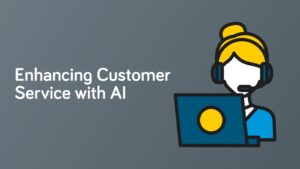
The fashion business has historically been dominated by stars and characters, creative geniuses who set trends purely out of instinct. It was widely believed that the industry needed to depend more on art than science. With the correct amount of data-driven research, fashion manufacturers can complement and enhance the artistic aspect of their business, giving the sector a new look.
Using apps that pull information on fashion sales, styles, and trends from a range of sources is known as fashion analytics. Businesses may make better judgments about what collections to develop, what inventory levels to keep, which distribution channels to utilize, and what promotions might best generate more money by using fashion analytics to evaluate previous performance and forecast future outcomes.
Mumbai, The Indian Fashion Hub:
Mumbai, known as the fashion capital of India, is a thriving center that serves as the engine for the nation’s fashion sector. Known for its unique blend of traditional and modern trends, the city is home to some of the biggest fashion businesses, retail behemoths, and designers in India. Mumbai’s fashion sector is a major employer and source of export income, contributing considerably to the nation’s economy. Mumbai held a significant portion of the Indian fashion retail sector, which was estimated by the India Brand Equity Foundation (IBEF) to be worth $90 billion in 2020 as a result of its status as a major hub for fashion and retail.
The city’s fashion sector is a mash-up of many cultural influences, fusing current international trends with the classic aesthetics of India’s rich textile legacy. Mumbai’s fashion sector, which ranges from high-end labels to streetwear companies, is vibrant and ever-changing, mirroring the multiculturalism of the city. One of the most eagerly awaited occasions on the Indian fashion calendar is the twice-yearly Lakmé Fashion Week in Mumbai, which draws buyers, models, and designers from all over the world.
Data Analytics: What Is It?
Analyzing datasets to make inferences about the information is known as data analytics. Artificial intelligence, which employs computational models to explore data for insights without a human guiding the machine, is being incorporated into analytics more and more. By sifting through massive information to uncover hidden patterns and connections, businesses employ data analytics to assist them in making better decisions. Beyond the realm of business, scientists and academics frequently employ data analytics to support or refute scientific theories, models, and hypotheses.
Data analytics in the fashion industry can assist retailers in forecasting future demand more precisely so that they can maintain appropriate inventory levels, better understanding the behavior of shoppers, optimizing the customer experience across digital and physical channels, and personalizing promotions based on past behaviors or interests, such as clothing styles, fits, and trends.
Business Analyst Course is very helpful if you are looking to secure a job in the fashion industry. With Data Science booming in every sector, a good certification comprehensively increases your chances of employment.
- Design & idea – To remain abreast of current trends and predict upcoming ones, designing a fashion collection necessitates a substantial amount of study and analysis. When choosing which designs to produce, intuition was a major factor in the past, but data analytics is now playing a bigger part.
To increase revenues and better meet customer expectations, fast fashion companies like Shein, Zara, and Fashion Nova are using techniques like trend forecasting, analyzing purchase data to discover buying trends, and gathering information on consumer preferences from social media. These businesses can make data-driven decisions about what designs to create and how much of them thanks to descriptive and predictive analytics, which will save waste and boost profitability. For instance, designers may better meet customer demand by incorporating eco-friendly materials and procedures into their designs if data analytics indicates that consumers are becoming more interested in sustainable fashion.
- Line planning: Data analytics has shown to be quite helpful in the fashion sector, where line planning is a critical step. Manufacturers may weed out unpopular ideas and make sure every aspect of the product—color palette, sizes, styles—is well considered by tracking client responses to samples. By using data analytics, manufacturers may steer clear of understocking or overstocking their collections, which can result in lost sales and expensive markdowns.
Spreadsheets may be used for detailed planning when there are a few lines involved, but hundreds of lines present a challenge. With data analytics, it’s simpler to design a product mix that will maximize value and optimize price by taking into account different expenses including overhead, profit margins, materials, and transportation. Manufacturers, for instance, might enhance their chances of selling out by producing more of these things by using data analytics to find the colors and styles that buyers want.
- Sourcing: In order to select the best suppliers, fashion companies work to gather as much information as they can about viable candidates. Multiple data point analysis, however, can be difficult and time-consuming. Fashion organizations may make well-informed judgments regarding their suppliers by using data analytics, which offers a quicker and more precise method of analyzing these data points. Sustainable practices have also become a top priority for all fashion brands, like Nike and Zara. Using products that are ethically sourced and sustainably manufactured is the first step towards becoming a more sustainable brand. Using certain indicators and criteria, data analytics may help assess how effectively suppliers and third-party providers follow compliance guidelines.
Fashion companies, for instance, may utilize data analytics to find suppliers who fit their sustainability requirements, lessening their environmental effect and enhancing their reputation.
- Production: Using data visualization to communicate production changes to important stakeholders is one of the best methods available. Giving employees access to business intelligence dashboards and data helps save lead times and get rid of waste in the way things are now produced. Additionally, it makes it possible for managers to promptly spot warning signs like declines in productivity, missed deadlines, and equipment failure, enabling them to take action before these problems worsen. A clear and comprehensive picture of production performance is provided via data visualization, making it simple for stakeholders to pinpoint areas in need of improvement. Additionally, data visualization shows areas where efficiency may be increased and helps to better understand the manufacturing process. For instance, it can assist in locating manufacturing process bottlenecks, allowing managers to more efficiently deploy resources and shorten lead times.
- Inventories Management: Fashion companies are using data mining techniques to extract insights that might help them manage their inventories more effectively and efficiently. Analyzing inventory data to comprehend client preferences, channel performance, and product performance requires the use of data analytics. These insights are essential for figuring out how much inventory is required to satisfy demand while maintaining low stock levels, improving stock control, and lowering product returns. Making these judgments based on facts reduces waste and minimizes mistakes. Data analytics, for instance, may assist in identifying inventory that is moving slowly, allowing companies to use corrective measures like markdowns or promotions to move the inventory.
- Quality Control: When it comes to fashion, a product’s quality is crucial. For example, luxury firms are able to charge high rates because of the flawless quality of their products. Fashion businesses are using artificial intelligence and prescriptive analytics to guarantee great quality. Supervisors are able to swiftly resolve quality-related concerns as a result, preventing major production delays. Insights on objectives, equipment, defect counts, and other variables are also provided by quality analytics and may be utilized to improve lagging processes. Descriptive analytics, for instance, may help a fashion firm save time and money by identifying quality problems in a batch of clothing as soon as they are discovered during manufacturing and taking prompt corrective action to avoid a recall.
Become a Certified Business Analyst Today! Elevate your career with Exclr Solutions’ industry-focused Business Analytics course in Mumbai. Whether you’re a beginner or looking to upskill, our expert-led classes in Mumbai will give you the edge to thrive in the competitive business world. Sign up now and start your journey to success!
Name: ExcelR- Data Science, Data Analytics, Business Analytics Course Training Mumbai
Address: 304, 3rd Floor, Pratibha Building. Three Petrol pump, Lal Bahadur Shastri Rd, opposite Manas Tower, Pakhdi, Thane West, Thane, Maharashtra 400602
Phone Number: 09108238354







